Japan - 2
Whilst with a population of 1.5 million Kyoto is hardly a wee village, it is dwarfed by its monster neighbour Osaka which has over 19m, which in turn is only half the population of Tokyo. So in comparison, Kyoto has a lower density, more space and a slower pace of life. It still has shops and restaurants with street frontages, and a surface public transport system that isn’t gridlocked. It also has a stunning array of historic buildings.
The former Imperial Palace is in a park in the city centre, and unlike Tokyo is usually open, and it is free to enter. Some rooms and buildings are out of bounds as it is still owned by the royal family and they do stay from time to time. The IP gardens are also free to visit, however numbers are restricted to 100 per day and you have to book, in person, in advance. We were lucky and managed to reserve places with 1 hour’s notice, but had to provide a lot of personal information to get on the list. Our passport IDs were checked and verified twice. It was well worth it as the guided tour was round a stunning garden, straight into my top 3 alongside Butchart Gardens, Vancouver Island and Sissinghurst, Kent.
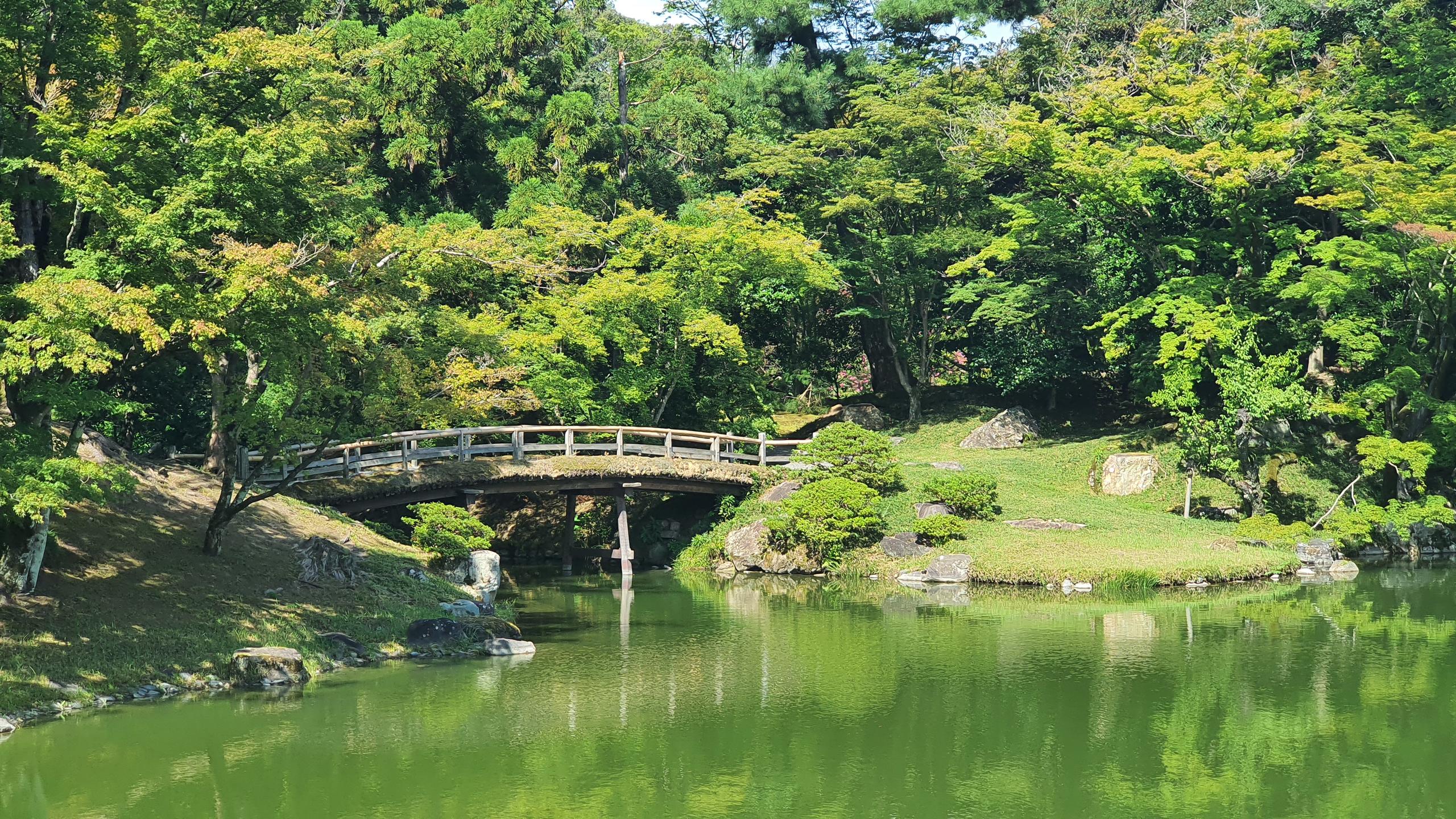
Imperial Palace Gardens, Kyoto. A real overload of greenery after the shades of beige seen in KSA.
Kyoto has a backdrop of hills and there are numerous shrines, temples, castles and villas on the outskirts of the city. But the must-see was Kinkaku-ji which is in the city area but with a hilly backdrop. One of four world heritage sites in Kyoto (for comparison Scotland has six), Kinkaku-ji is the poster site.

Kinkaku-ji, Kyoto
A very different WH site that we visited was at
Hiroshima, which is a 90 minute Shinkansen journey from Kyoto. There are
few cities in the world whose names are so synonymous with a major event in
history, and the city is now a living memorial to the first atomic bomb
mission. Whilst the events surrounding the bomb are well documented in history,
the local museums and relics are focused on the effects and aftermath of the 6th August 1945 explosion. The building recognizable as the dome sits at one end of
the Peace memorial park in the city centre, and the main museum is at the
other. In between are various statues, a memorial hall and an international
peace conference centre. Hiroshima suffered over 70,000 instantaneous
fatalities after the bomb was exploded 600m above the city, and a similar
number subsequently died of secondary causes, notably burns and radiation
sickness. Today the city is completely repopulated and 2 million folk live in
the area that was affected. Next to the dome building (the former Hiroshima
Prefectural Industrial Promotion Hall) we came across a one-man exhibition
where a survivor told his personal and family story of the aftermath of the bomb.
He was actually an unborn baby at time, but was born shortly after and his
mother died young, of radiation complications. I felt it was a privilege to
hear his story.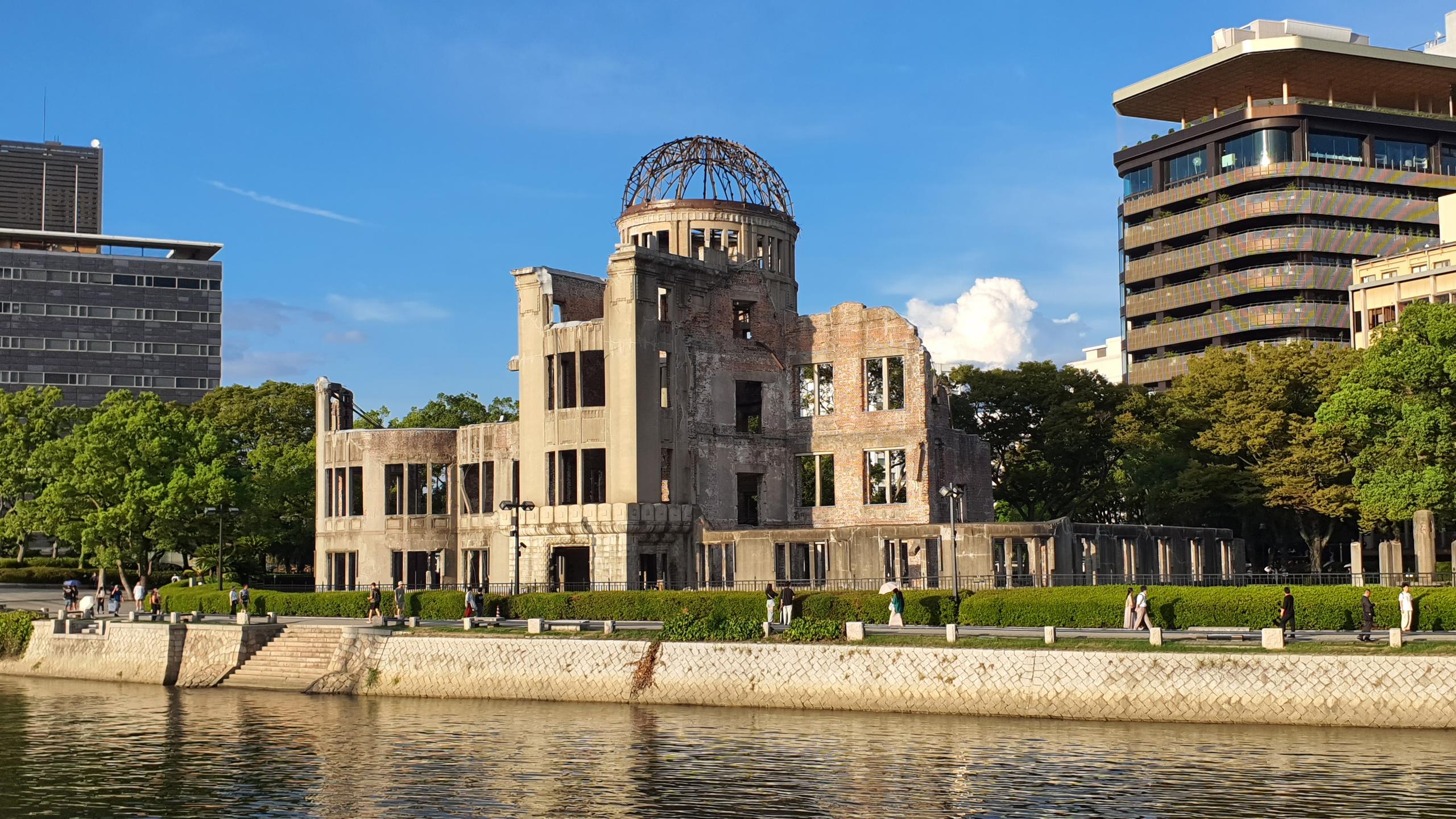
No caption necessary
All Japanese cities we visited have impressive street food areas and the sights and smells are interesting indeed. Sushi – obviously – is a favourite, but there is a wide choice of tasty looking snacks and drinks to be had. We tried many new foods, interesting fruits and drinks too. I have to report that Lotus tea does not taste like our Lotus biscuits!
Unfortunately for us both Elaine and I have an
intolerance to shellfish and a friend in Riyadh had given us a good tip – make
up a card in Japanese to declare this fact and whenever ordering food show it
to the server. We used it frequently and it saved us much time, and restaurant
and hotel staff were happy to suggest good options for us. I guess we have
become comfortable in Saudi where English is the working language in most
settings and we had to adjust to Japan where relatively few people speak it. Fortunately
most transport and street signs in the country are bilingual with English, so
navigation was not a problem. Shops signs and products with labels however,
tended to be monolingual.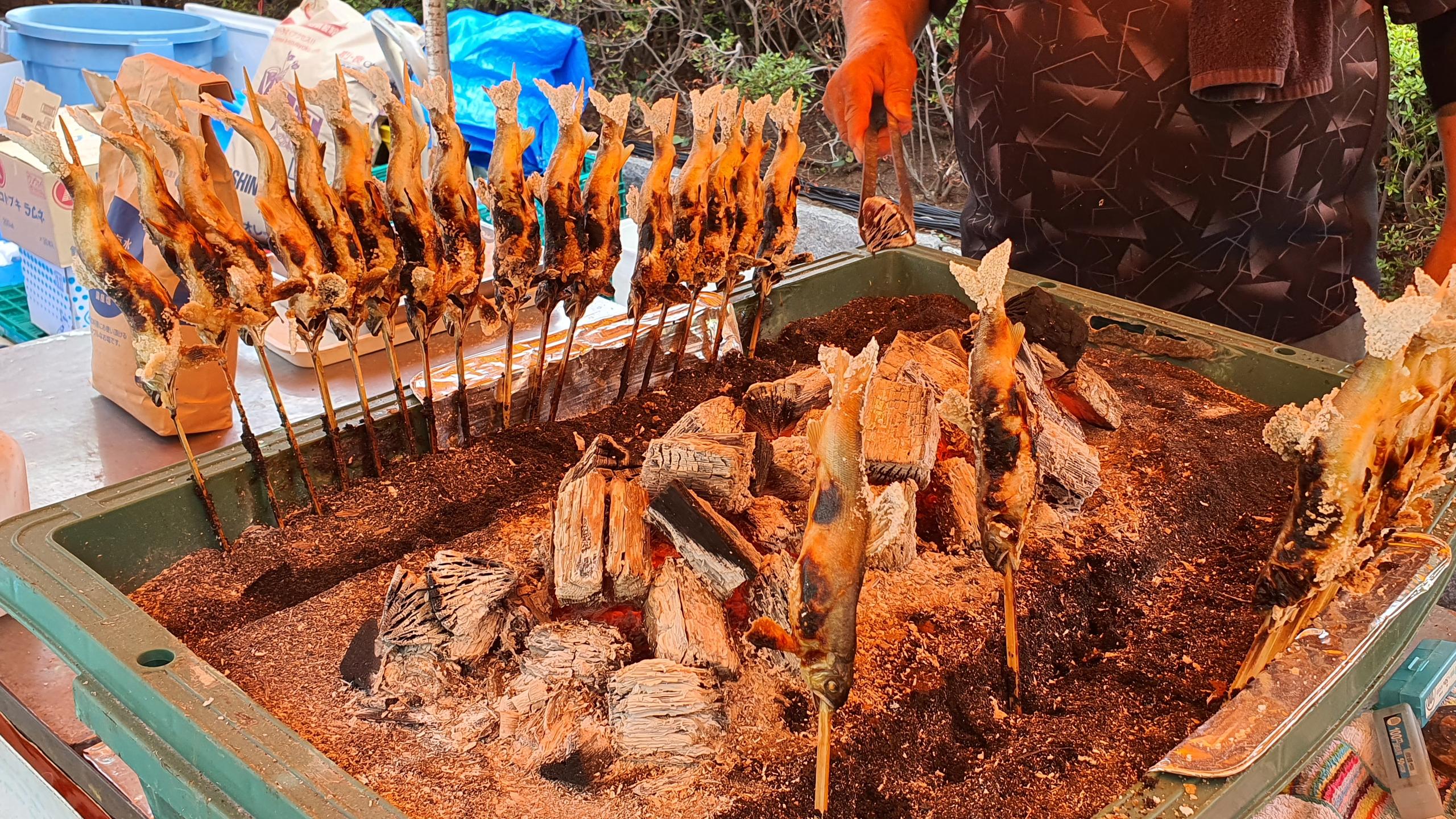
Vertically grilled fish
And finally, I did manage to visit a few
railway installations. The Kyoto Railway Museum was excellent and on a par (in
terms of exhibits and information) with the British one in York. And another
day out for me was to the Kurobe Gorge railway. This is a tourist line running
20km up a narrow valley where several hydro-electric power stations are
located. The railway was used for constructing these, and its engineering,
viaducts, tunnels and spectacular scenery have been part of a visitor and
tourist scheme ever since. If it were in the UK, it would be in the top echelon
of heritage lines. 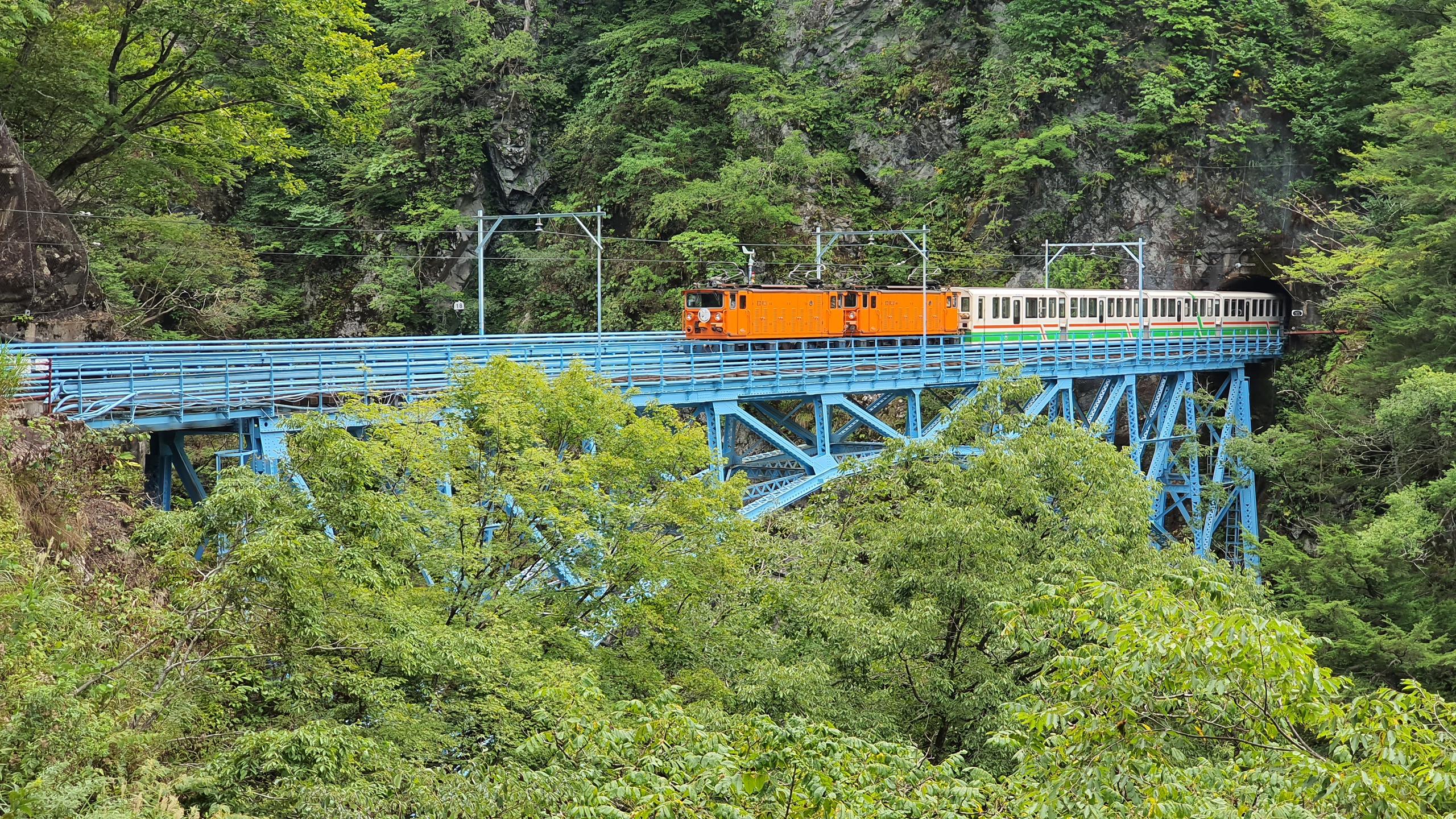
Kurobe Gorge
I also travelled on some trains and metro lines in Tokyo during the rush hour. Everything you have ever read about the density of people is absolutely true. Fortunately for the gentler sex most trains have women-only carriages, but they seem to be equally tightly packed. I guess I’m in a minority in having also travelled on high density trains in Makkah during the Hajj, and I can report that the Japanese squeeze people in more tightly than the muslim hajjis.
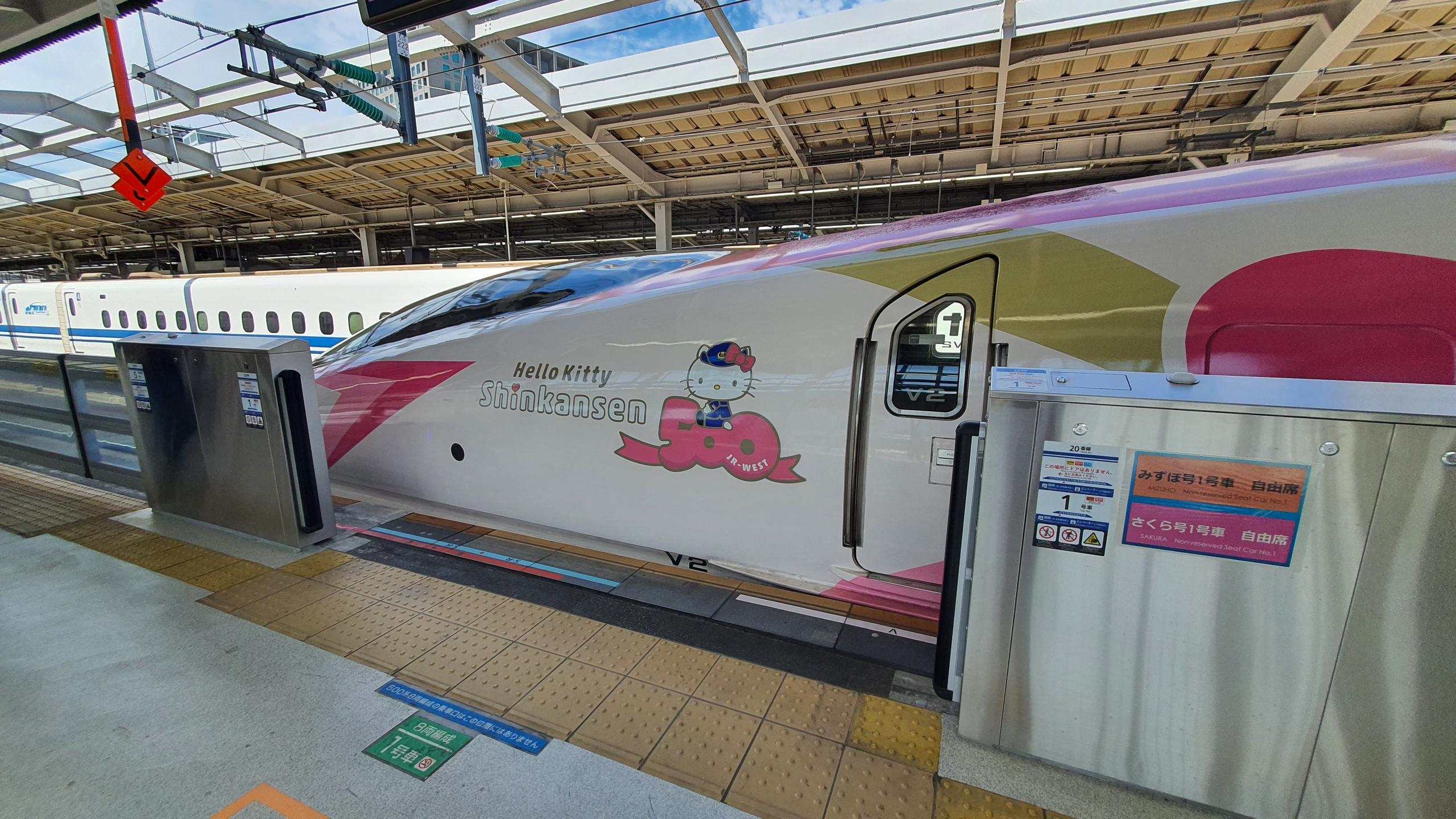
Shinkansen train - with Hello Kitty branding!
So, my impression of Japan is of being a modern country with a strong heritage and unique culture, arcane traditions, densely populated cities, stunted cars and automatic garage stacking systems, polite but assertive people, effective and clean public transport and facilities, and finally, wondrous toilets. I’d love to go back and spend longer and explore more, including the northern areas, but I have a feeling that was a one-off.
